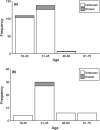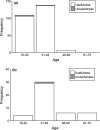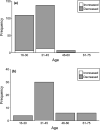Vulture distribution and people perception of vultures in Pokhara Valley, Nepal
- PMID: 35136564
- PMCID: PMC8809430
- DOI: 10.1002/ece3.8528
Vulture distribution and people perception of vultures in Pokhara Valley, Nepal
Abstract
Due to an abundance and diversity of vultures, Nepal is one of the most important countries for vulture conservation. Within Nepal, the Pokhara Valley is especially significant. We examine the distribution of vultures within the Pokhara Valley by conducting counts at 11 potential feeding or roosting sites using point count method. We further surveyed people of the valley regarding their perception of vulture ecology and conservation, knowledge of diclofenac use within the valley, and burial of livestock carcasses. We detected eight species of vultures, four of which are currently threatened with extinction. White-rumped vulture Gyps bengalensis, Egyptian vulture Nephron percnopterus, and Himalayan vulture G. himalayensis were the most abundant. Almost all respondents (98%) had sighted the vultures in the wild. Formally educated respondents reported seeing vultures' slightly more than nonformally educated respondents. Fifty-eight percent respondents suspected habitat loss was the major threat for the vulture population decline in Pokhara Valley, and 97% respondents were not aware of any diclofenac use. The knowledge of vultures in people with different age groups suggests a more awareness programs are needed for local people, especially those who carry out animal husbandry and provide livestock to the vulture restaurant.
Keywords: abundance; birds; conservation; habitat loss; population; vulture.
© 2022 The Authors. Ecology and Evolution published by John Wiley & Sons Ltd.
Conflict of interest statement
None.
Figures







Similar articles
-
Risks of avian collision at the Pokhara Regional International Airport, Nepal.Environ Monit Assess. 2025 Jul 1;197(7):835. doi: 10.1007/s10661-025-14329-3. Environ Monit Assess. 2025. PMID: 40593446
-
The population decline of Gyps vultures in India and Nepal has slowed since veterinary use of diclofenac was banned.PLoS One. 2012;7(11):e49118. doi: 10.1371/journal.pone.0049118. Epub 2012 Nov 7. PLoS One. 2012. PMID: 23145090 Free PMC article.
-
Nimesulide poisoning in white-rumped vulture Gyps bengalensis in Gujarat, India.Environ Sci Pollut Res Int. 2021 Nov;28(41):57818-57824. doi: 10.1007/s11356-021-14702-y. Epub 2021 Jun 7. Environ Sci Pollut Res Int. 2021. PMID: 34097213
-
Dropping dead: causes and consequences of vulture population declines worldwide.Ann N Y Acad Sci. 2012 Feb;1249:57-71. doi: 10.1111/j.1749-6632.2011.06293.x. Epub 2011 Dec 16. Ann N Y Acad Sci. 2012. PMID: 22175274 Review.
-
The veterinary use of diclofenac and vulture conservation in Spain: Updated evidence and socio-ecological implications.Sci Total Environ. 2021 Nov 20;796:148851. doi: 10.1016/j.scitotenv.2021.148851. Epub 2021 Jul 3. Sci Total Environ. 2021. PMID: 34271379 Review.
Cited by
-
A Socioecological Assessment of Vulture Abundance and Community Perceptions Before and After Landfill Site Shift in Pokhara, Nepal.Ecol Evol. 2025 Jun 26;15(7):e71684. doi: 10.1002/ece3.71684. eCollection 2025 Jul. Ecol Evol. 2025. PMID: 40584674 Free PMC article.
-
Cultural significance and conservation challenges of the hooded vulture (Necrosyrtes monachus) and other vulture species in northeastern Benin.J Ethnobiol Ethnomed. 2025 Jul 22;21(1):51. doi: 10.1186/s13002-025-00806-z. J Ethnobiol Ethnomed. 2025. PMID: 40691828 Free PMC article.
-
Factors Influencing the Potential Distribution of Globally Endangered Egyptian Vulture Nesting Habitat in Nepal.Animals (Basel). 2023 Feb 11;13(4):633. doi: 10.3390/ani13040633. Animals (Basel). 2023. PMID: 36830419 Free PMC article.
-
Preference of trees for nest building by critically endangered white-rumped vultures (Gyps bengalensis) in Nepal.Ecol Evol. 2024 Mar 18;14(3):e11175. doi: 10.1002/ece3.11175. eCollection 2024 Mar. Ecol Evol. 2024. PMID: 38505186 Free PMC article.
References
-
- Ballejo, F. , Grilli, M. G. , & Lambertucci, S. A. (2019). A long and troublesome journey: People’s perceptions and attitudes along the migratory path of a scavenger bird. Ethnobiology and Conservation. 10.15451/ec2019-10-8.13-1-13 - DOI
-
- Benson, P. C. , & McClure, C. J. W. (2019). The decline and rise of the Kransberg Cape Vulture colony over 35‐years has implications for composite population indices and survey frequency. Ibis. 10.1111/ibi.12782 - DOI
-
- Bhattarai, B. R. , & Fischer, F. (2014). Human–tiger Panthera tigris conflict and its perception in Bardia National Park, Nepal. Oryx, 48(4), 522–528.
-
- Bhusal, K. P. , Chaudhary, I. P. , Dangaura, H. L. , Rana, D. B. , & Joshi, A. B. (2019). Nesting of critically endangered slender‐billed vulture Gyps tenuirostris more than decade in Nepal. Vulture Bullet, 8, 25–27.
LinkOut - more resources
Full Text Sources

